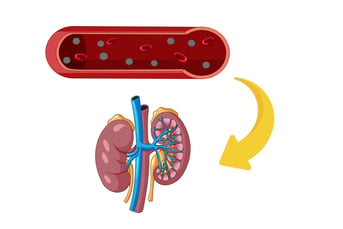Chelation and Autism Research
Safety and efficacy of oral DMSA therapy for children with autism spectrum disorders: Part A--medical results
Authors:
Adams, J.B., Baral, M., Geis, E., Mitchell, J., Ingram, J., Hensley, A., Zappia, I., Newmark, S., Gehn, E., Rubin, R.A. and Mitchell, K.
Research study
Year
Type
Study size
Abstract
LINK/DOI
Background:
This study investigated the effect of oral dimercapto succinic acid (DMSA) therapy for children with autism spectrum disorders ages 3-8 years.
Methods:
Phase 1 involved 65 children who received one round of DMSA (3 days). Participants who had high urinary excretion of toxic metals were selected to continue on to phase 2. In phase 2, 49 participants were randomly assigned in a double-blind design to receive an additional 6 rounds of either DMSA or placebo.
Results:
DMSA greatly increased the excretion of lead, substantially increased excretion of tin and bismuth, and somewhat increased the excretion of thallium, mercury, antimony, and tungsten. There was some increase in urinary excretion of essential minerals, especially potassium and chromium. The Phase 1 single round of DMSA led to a dramatic normalization of RBC glutathione in almost all cases, and greatly improved abnormal platelet counts, suggesting a significant decrease in inflammation.
Conclusion:
Overall, DMSA therapy seems to be reasonably safe, effective in removing several toxic metals (especially lead), dramatically effective in normalizing RBC glutathione, and effective in normalizing platelet counts. Only 1 round (3 days) was sufficient to improve glutathione and platelets. Additional rounds increased excretion of toxic meta
65
Randomized double-blind trial (Phase 1)
2009
doi: 10.1186/1472-6904-9-16


Safety and efficacy of oral DMSA therapy for children with autism spectrum disorders: Part B - Behavioral results
Authors:
Adams, J.B., Baral, M., Geis, E., Mitchell, J., Ingram, J., Hensley, A., Zappia, I., Newmark, S., Gehn, E., Rubin, R.A. and Mitchell, K.
Research study
Year
Type
Study size
Abstract
LINK/DOI
Background: This study investigated the effects of oral dimercapto succinic acid (DMSA) therapy on the behavioural symptoms of children with autism spectrum disorders (ASD) ages 3-8 years.
Methods: Phase 1 involved 65 children with ASD who received one round of DMSA (3 days). Participants who had high urinary excretion of toxic metals were selected to continue on to phase 2. In phase 2, 49 participants were randomly assigned in a double-blind design to receive an additional 6 rounds of either DMSA or placebo.
Results: The groups receiving one round and seven rounds of DMSA had significant improvements on all the assessment measures. For the seven round group, the degree of improvement on the assessment measures could be partially explained by a regression analysis based on excretion of toxic metals and changes in glutathione (adjusted R2 of 0.28-0.75, p < 0.02 in all cases). One round of DMSA had nearly the same benefit as seven rounds. The assessment measures correlated reasonably with one another at the beginning of the study (r = 0.60-0.87) and even better at the end of the study (r = 0.63-0.94).
Conclusion: Overall, both one and seven rounds of DMSA therapy seems to be reasonably safe in children with ASD who have high urinary excretion of toxic metals, and possibly helpful in reducing some of the symptoms of autism in those children.
49
Randomized double-blind trial (Phase 2)
2009
doi: 10.1186/1472-6904-9-17
A clinical trial of combined anti-androgen and anti-heavy metal therapy in autistic disorders
Authors:
Geier, D.A. and Geier, M.R.
Research study
Year
Type
Study size
Abstract
LINK/DOI
Background: A medical hypothesis has suggested that some autism spectrum disorders (ASDs) may result from interactions between the methionine cycle-transsulfuration and androgen pathways following exposure to mercury.
Methods: The IRB of the Institute for Chronic Illnesses approved the present study. A novel treatment was utilized combining LUPRON (leuprolide acetate, TAP Pharmaceuticals, Inc.) and CHEMET (meso-2, 3-dimercaptosuccinic acid--DMSA, McNeil Consumer Products Company) on 11 consecutive children with ASDs.
Results: A significant (p<0.01) overall improvement from the 70-79th percentile of severity (median baseline score=87) at baseline to the 40-49th percentile of severity (median end of study period score=63) at the end of the study was observed for patients treated for a median of approximately 4 months. Significant improvements in sociability, cognitive awareness, behavior, and clinical symptoms/behaviors of hyperandrogenemia were also observed. Significant decreases in blood androgens and increases in urinary heavy metal concentrations were observed. Minimal drug adverse effects were found.
Conclusion: This study provides the first clinical evidence for the benefit that combined anti-androgen and anti-heavy metal therapy may have on some children with ASDs. Additional studies should examine androgen and heavy metal mechanisms of action in ASDs, and future ASD treatment protocols should consider androgens and heavy metals.
11
Open-label clinical trial
2006
PMID: 17187010


